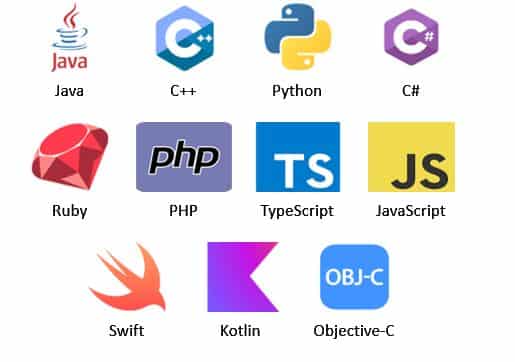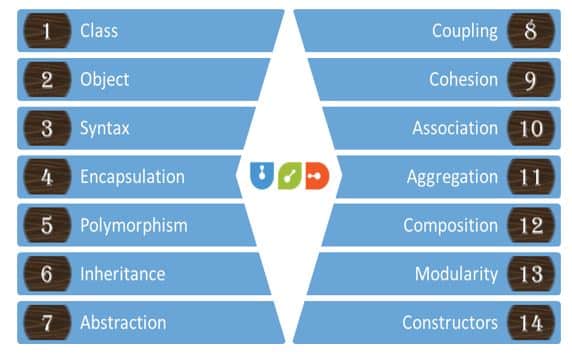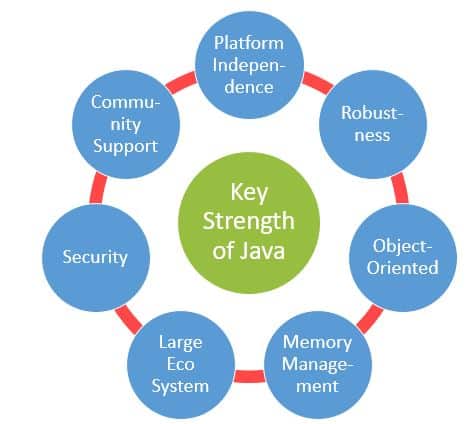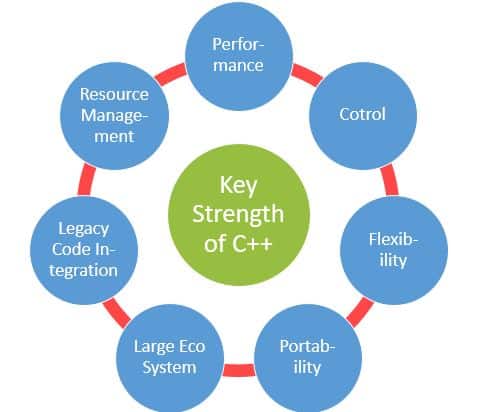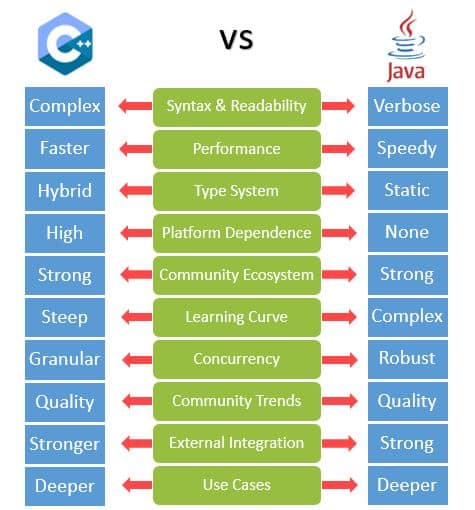Table of Contents
ToggleAre you in quest of how to become a developer? Or are you enthusiastic to kick-start your app project with object oriented programming? Whatever you choose, it’s important to note that every challenge is an opportunity in disguise, awaiting your efforts to find a solution. Unique Software Development encourages and supports the developers as well as the business community with information and IT solution design. Our IT services include web, mobile app, and custom software development, along with the latest technologies and IT support services.
In this blog, we will list the most common object oriented programming languages, addressing the C++ vs Java debate in detail. It will assist if you want to learn a new language or choose the best one for your project concept. We will explain polymorphism, inheritance, and coupling for your reference, among the rest of the key concepts of OOP. Moreover, the article will cover the key strengths and differences of Java and C++ in a lighter way before determining the best one.
Object Oriented Programming Languages – The OOP Family
The “OOP family” comprises programming languages sharing core Object-Oriented Programming (OOP) principles like polymorphism, inheritance, and coupling. They enable modular, reusable code and include popular languages like Java, C++, and Python. A shared foundation fosters interoperability, easy knowledge transfer, and a vibrant developer community. Its members are:
1. Java
Java is renowned for its platform independence and robustness, resembling C++ in syntax. Its strong object-oriented nature makes it versatile, powering everything from enterprise systems to mobile apps.
2. C++
C++ combines high performance with object-oriented features, making it indispensable for systems programming and game development. It’s a pioneer in championing object-oriented principles.
3. Python
Python’s simplicity and readability make it ideal for agile development. It seamlessly integrates object-oriented principles, offering elegance and functionality in equal measure.
4. C#
C# is tailored for Windows applications, seamlessly integrating with the .NET framework. Crafted with a strong emphasis on OOP, it’s a stalwart for Windows-centric development.
5. Ruby
Ruby prioritizes developer delight with its friendly syntax. It excels in web development, driven by its Rails framework. Its design revolves around object-oriented principles, ensuring an intuitive coding experience.
6. PHP
PHP is tailored for server-side scripting and dynamic web pages. It enhances code organization and reusability in web development, incorporating object-oriented features.
7. TypeScript
TypeScript introduces static typing to JavaScript, enhancing code quality and maintainability. Building on JavaScript’s OOP capabilities, it adds strength with static typing for large-scale apps.
8. JavaScript
A versatile language for both client-side and server-side development, JavaScript is integral to the web development stack and offers strong support for OOP principles.
9. Swift
From Apple, Swift is ideal for building iOS, macOS, watchOS, and tvOS applications and is known for its safety, speed, and modern syntax.
10. Kotlin
A modern, statically typed language that interoperates with Java, Kotlin is favored for Android app development due to its conciseness and expressiveness.
11. Objective-C
An object-oriented language used primarily for macOS and iOS development, Objective-C was the primary language for Apple platforms before the introduction of Swift.
Polymorphism, Inheritance, and Coupling
Both languages share syntax and OOP principles yet diverge in memory management and performance. Java’s platform independence contrasts with C++’s system-specific compilation. While the former automates memory handling, the latter requires manual management.
Development environments vary, with one favoring integrated IDEs and the other offering diverse options. C++ often outperforms Java due to direct resource access, while Java simplifies cross-platform deployment. However, the following aspects require a deeper understanding so we will discuss the rest some other day.
1. What is Polymorphism?
Polymorphism is the ability of objects to take on multiple forms. In programming languages like Java and C++, polymorphism allows objects of different types to be treated as objects of a common superclass through inheritance.
Java
Polymorphism is primarily achieved through method overriding in Java. Subclasses provide their exclusive implementation of a method that is already defined in their superclass. It allows different objects to respond to the same message in different ways.
C++
Polymorphism can be achieved through both function overloading and virtual functions in C++. Function overloading allows multiple functions with the same name but different parameters to exist within the same scope. Virtual functions, on the other hand, are functions declared in a base class that can be overridden in derived classes, enabling dynamic method resolution at runtime.
2. What is Inheritance?
Inheritance is a fundamental feature of object-oriented programming that allows a new class to inherit properties and behavior (methods) from an existing class (the superclass or base class).
Java
It supports single inheritance, meaning a subclass can inherit from only one superclass. Java uses the extends keyword to denote inheritance relationships between classes.
C++
It supports both single and multiple inheritance. Multiple inheritance allows a class to inherit from more than one base class. C++ uses the ‘:’ syntax to denote inheritance relationships, and it also supports virtual inheritance to handle ambiguity and the “diamond problem” associated with multiple inheritance.
3. What is Coupling?
Coupling refers to the degree of interdependence between software modules or components. Loose coupling indicates that components are relatively independent and can be modified or replaced without affecting other components, while tight coupling implies strong dependencies between components.
Java
It tends to promote loose coupling through interfaces and design patterns such as Dependency Injection (DI) and Inversion of Control (IoC). Interfaces define contracts that classes can implement, allowing for flexibility and interchangeability of implementations.
C++
It can exhibit both loose and tight coupling, depending on how the code is structured. While C++ does not have built-in constructs like interfaces in Java, it allows for flexibility in designing class hierarchies and managing dependencies. However, without proper design considerations, C++ code can become tightly coupled due to direct dependencies between classes and components.
The Historic Origins of the Sibling Rivalry
The historical origins of the sibling rivalry between Java and C++ can be traced back to the late 1980s and early 1990s. It was a period of significant innovation and development in the field of programming languages and software development.
1. C++
C++ was developed by Bjarne Stroustrup in the early 1980s at Bell Labs. It was designed as an extension of the C programming language, with added support for object-oriented programming (OOP) principles such as coupling, inheritance, and polymorphism. C++ gained popularity due to its flexibility, efficiency, and ability to handle system-level programming tasks.
2. Java
Java was created by James Gosling and his team in the early 1990s at Sun Microsystems and later on acquired by Oracle. Originally called Oak, Java was developed with the goal of creating a platform-independent programming language for embedded systems. However, as the internet began to gain popularity, the firm recognized the potential of Java for web-based applications. Java was designed to be simple, robust, and portable, with features like automatic memory management (garbage collection) and platform independence.
3. The Sibling Rivalry
The rivalry between Java and C++ emerged as both languages gained popularity in the software development community. C++ was ideal for system-level programming, game development, and performance-critical applications. Java claims its status as a language for web app development, enterprise software, and cross-platform applications.
Java’s platform independence and simplicity appealed to developers who sought to write code once and run it anywhere. At the same time, C++’s efficiency and low-level capabilities made it a preferred choice for tasks where performance was critical. Thus, the C++ vs Java debate began.
4. Can They Ever Unite? Can we use them together in a program?
Although it requires extra effort due to the differences in their execution environments and syntax, we can use them together.
One common way to combine C++ and Java is by using a technique called “JNI” (Java Native Interface). JNI allows Java code to call functions written in C or C++ and vice versa. You can write performance-critical parts of your program in C++ for efficiency and then call those functions from your Java code. Here’s a high-level overview of how you might do this:
- Write the performance-critical parts of your program in C++
- Create a C++ interface using JNI, which exposes these C++ functions to Java
- Write the rest of your program in Java, and use the JNI interface to call the C++ functions
Keep in mind that using JNI adds complexity to your codebase and can introduce potential issues such as memory management, platform dependencies, and performance overhead. Therefore, it’s essential to carefully consider whether using both languages is necessary for your project.
Over the years, both languages continued to evolve and adapt to the changing needs of the software development industry. Despite their differences, Java and C++ have coexisted and complemented each other in various domains, contributing to code diversity and richness.
Key Strengths of Java
Rice production. Oh! That’s an island. Never mind, Spotify, Twitter, Uber, and Android Studio are some of the famous apps that have been built using Java. The language has subsequent strengths.
1. Platform Independence
Its “write once, run anywhere” principle allows Java programs to run on any platform that supports Java without modification.
2. Robustness
Its strong type-checking and exception-handling features contribute to robust and reliable code.
3. Object-Oriented
Its strong support for object-oriented programming enables modular and scalable software development.
4. Memory Management
Its automatic memory management (garbage collection) simplifies memory allocation and deallocation, reducing the risk of memory leaks.
5. Large Ecosystem
It boasts a vast ecosystem of libraries, frameworks, and tools, making it suitable for a wide range of applications, from web development to enterprise systems.
6. Security
Its built-in security features, such as bytecode verification and sandboxing, help protect against malicious attacks and ensure secure execution of code.
7. Community Support
It has a large and active community of developers, providing ample resources, documentation, and support for learning and troubleshooting.
Key Strengths of C++
Adobe Photoshop, Microsoft Office, Google Chrome, and Windows are some of the popular apps built using C++. Besides its ‘C’ eager to swallow two ‘plus’ signs, the following are the key strengths of the language.
1. Performance
It offers high performance and efficiency, making it suitable for system-level programming, game development, and performance-critical applications.
2. Control
It provides low-level control over system resources and hardware, allowing developers to fine-tune performance and optimize code for specific hardware platforms.
3. Flexibility
It supports both procedural and object-oriented programming paradigms, offering a high degree of flexibility in code organization and design.
4. Portability
While not as platform-independent as Java, C++ code can be compiled to run on various platforms with minimal modifications.
5. Large Ecosystem
It has a rich ecosystem of libraries, frameworks, and tools, supporting a wide range of application domains, including graphics programming, embedded systems, and scientific computing.
6. Legacy Code Integration
It seamlessly integrates with existing C codebases, allowing developers to leverage legacy code and libraries while incorporating modern C++ features.
7. Resource Management
It provides manual memory management capabilities, allowing developers to control memory allocation and deallocation for optimal resource utilization.
Key Differences of Java and C++
Can’t they handle their differences on their own? Obviously not. What we see as differences is the actual reason for the diversity and fruitfulness of the OOP family. The key differences between the two languages are as follows.
1. Platform Dependency
Java programs are platform-independent, meaning they can run on any platform with the Java Virtual Machine (JVM) installed without modification.
C++ programs are platform-dependent, as they compile directly to machine code specific to the target platform.
2. Memory Management
Java uses automatic memory management (garbage collection) to allocate and deallocate memory, which simplifies memory management and reduces the risk of memory leaks.
C++ provides manual memory management, where developers are responsible for allocating and deallocating memory using functions like new and delete. It gives more control but also increases the risk of memory-related bugs like memory leaks and dangling pointers.
3. Syntax
Java syntax is similar to C++ but with some differences, such as the absence of pointers and multiple inheritance and the use of explicit memory management.
C++ syntax is more complex than Java’s, with features like pointers, multiple inheritance, and operator overloading.
4. Object-Oriented Features
Java was designed with strong support for object-oriented programming (OOP) principles, including classes, objects, inheritance, polymorphism, and encapsulation.
C++ also supports OOP principles but with more flexibility and complexity. It allows for multiple inheritance, operator overloading, and manual memory management, which can make it more challenging to use.
5. Standard Libraries
Java has a comprehensive standard library known as the Java Development Kit (JDK), which provides a wide range of built-in classes and utilities for common tasks like I/O, networking, and GUI programming.
C++ also has a standard library known as the C++ Standard Library, which provides a set of predefined classes and functions for common tasks. However, it is generally less extensive than Java’s standard library.
6. Performance
Java programs typically perform slower than C++ programs due to the overhead of the JVM and garbage collection. However, modern JVM implementations have improved performance significantly.
C++ programs generally perform faster than Java, as they compile directly to machine code and have more control over memory management and optimization.
7. Development Environment
Java development is typically done using an Integrated Development Environment (IDE) like Eclipse or IntelliJ IDEA, which provides features like code debugging, refactoring, and version control integration.
C++ development can be done using various IDEs (e.g., Visual Studio, Xcode) or text editors like Vim or Emacs, with additional tools for building, debugging, and profiling code.
C++ vs Java Final Verdict: Which is the Best?
Tragically, the answer to the question is neither simple nor straightforward. Choosing between Java and C++ depends on various factors, including project requirements, development goals, and personal preferences. We recommend consulting a professional agency like Unique Software Development to outline your project scope and pick the best stack. However, in case you decide on handling the project yourself, here’s a concise overview for your reference:
1. Java
- Best for platform-independent applications and large-scale enterprise systems.
- Offers automatic memory management and robust security features.
- Suitable for web development, mobile apps (Android), and server-side applications.
- Simplifies development with a rich ecosystem of libraries, frameworks, and tools.
- Ideal for developers to prioritize productivity and ease of deployment.
2. C++
- Ideal for performance-critical applications and system-level programming.
- Provides low-level control over system resources and hardware.
- Suitable for game development, embedded systems, and high-performance computing.
- Offers flexibility and efficiency but requires manual memory management.
- Perfect for developers seeking high performance and optimal resource utilization.


